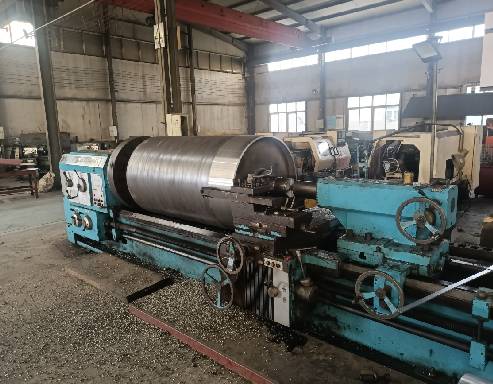 Afrikaans
Afrikaans  Albanian
Albanian  Amharic
Amharic  Arabic
Arabic  Armenian
Armenian  Azerbaijani
Azerbaijani  Basque
Basque  Belarusian
Belarusian  Bengali
Bengali  Bosnian
Bosnian  Bulgarian
Bulgarian  Catalan
Catalan  Cebuano
Cebuano  Corsican
Corsican  Croatian
Croatian  Czech
Czech  Danish
Danish  Dutch
Dutch  English
English  Esperanto
Esperanto  Estonian
Estonian  Finnish
Finnish  French
French  Frisian
Frisian  Galician
Galician  Georgian
Georgian  German
German  Greek
Greek  Gujarati
Gujarati  Haitian Creole
Haitian Creole  hausa
hausa  hawaiian
hawaiian  Hebrew
Hebrew  Hindi
Hindi  Miao
Miao  Hungarian
Hungarian  Icelandic
Icelandic  igbo
igbo  Indonesian
Indonesian  irish
irish  Italian
Italian  Japanese
Japanese  Javanese
Javanese  Kannada
Kannada  kazakh
kazakh  Khmer
Khmer  Rwandese
Rwandese  Korean
Korean  Kurdish
Kurdish  Kyrgyz
Kyrgyz  Lao
Lao  Latin
Latin  Latvian
Latvian  Lithuanian
Lithuanian  Luxembourgish
Luxembourgish  Macedonian
Macedonian  Malgashi
Malgashi  Malay
Malay  Malayalam
Malayalam  Maltese
Maltese  Maori
Maori  Marathi
Marathi  Mongolian
Mongolian  Myanmar
Myanmar  Nepali
Nepali  Norwegian
Norwegian  Norwegian
Norwegian  Occitan
Occitan  Pashto
Pashto  Persian
Persian  Polish
Polish  Portuguese
Portuguese  Punjabi
Punjabi  Romanian
Romanian  Russian
Russian  Samoan
Samoan  Scottish Gaelic
Scottish Gaelic  Serbian
Serbian  Sesotho
Sesotho  Shona
Shona  Sindhi
Sindhi  Sinhala
Sinhala  Slovak
Slovak  Slovenian
Slovenian  Somali
Somali  Spanish
Spanish  Sundanese
Sundanese  Swahili
Swahili  Swedish
Swedish  Tagalog
Tagalog  Tajik
Tajik  Tamil
Tamil  Tatar
Tatar  Telugu
Telugu  Thai
Thai  Turkish
Turkish  Turkmen
Turkmen  Ukrainian
Ukrainian  Urdu
Urdu  Uighur
Uighur  Uzbek
Uzbek  Vietnamese
Vietnamese  Welsh
Welsh  Bantu
Bantu  Yiddish
Yiddish  Yoruba
Yoruba  Zulu
Zulu snub pulley
Understanding Snub Pulleys Features and Applications
A snub pulley is a specialized type of pulley used predominantly in the context of mechanical systems and conveyor belts. Its primary function is to redirect the path of a belt while also providing tension in the system, crucial for maintaining efficiency and performance. Snub pulleys are vital components, often employed in various industrial applications, from mining to manufacturing.
Design and Features
The design of a snub pulley is relatively straightforward yet effective. Typically, it consists of a cylindrical drum mounted on shafts, allowing it to rotate freely. What sets snub pulleys apart from standard pulleys is the angle at which they redirect the belt. Positioned at a particular angle, usually around 45 degrees, they ensure that the belt maintains an optimal tension and reduces slippage on the drive pulley. This feature is critical as it minimizes wear on both the belt and the pulleys, extending the lifespan of the entire system.
Snub pulleys are often coated with materials that enhance friction, helping keep the belt securely in place
. Furthermore, they are sized according to the specific needs of the application, with considerations given to the type of belt used, the load it will carry, and the speed of operation. The correct selection and installation of a snub pulley can lead to significant improvements in the operational efficiency of machinery.Applications in Industry
snub pulley

The versatility of snub pulleys allows them to be utilized across various industries. In mining operations, for example, snub pulleys are employed in conveyor belts that transport extracted materials. Their ability to redirect belts at strategic angles reduces the risk of material spillage and ensures a smooth flow of operations.
In the manufacturing sector, snub pulleys are integral to assembly lines, where they help manage the movement of products through different workstations. By maintaining proper belt tension, they ensure that the conveyor systems work efficiently, preventing downtime caused by slippage or belt failure.
Maintenance and Best Practices
To ensure optimal performance, regular maintenance of snub pulleys is essential. This includes routine inspections for wear and tear, lubrication of moving parts, and ensuring that all connections are secure. Keeping the system clean from debris and dust can also prevent unexpected failures and enhance the longevity of the components involved.
In conclusion, snub pulleys play a significant role in the efficiency of mechanical systems, particularly in industries reliant on conveyor technology. Their unique design enables them to maintain proper tension and redirect belts effectively, making them indispensable in various applications. Understanding their features, applications, and maintenance practices can help industries maximize their operational capabilities and reduce costs associated with equipment failure.
-
Revolutionizing Conveyor Reliability with Advanced Rubber Lagging PulleysNewsJul.22,2025
-
Powering Precision and Durability with Expert Manufacturers of Conveyor ComponentsNewsJul.22,2025
-
Optimizing Conveyor Systems with Advanced Conveyor AccessoriesNewsJul.22,2025
-
Maximize Conveyor Efficiency with Quality Conveyor Idler PulleysNewsJul.22,2025
-
Future-Proof Your Conveyor System with High-Performance Polyurethane RollerNewsJul.22,2025
-
Driving Efficiency Forward with Quality Idlers and RollersNewsJul.22,2025





























